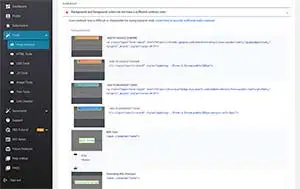Imagine you're a small business owner looking to grow your customer base. You've heard about email marketing but aren't sure where to start. Well, fear not! With a little know-how and some creativity, you can master the art of email marketing and take your business to new heights.
First things first, you need to build your email list. This is the foundation of any successful email marketing campaign. Start by collecting email addresses from your website visitors, social media followers, and existing customers. You can offer incentives like discounts or freebies to entice people to sign up for your mailing list.
Once you have a solid list of subscribers, it's time to craft compelling email content. Think about what your audience wants to hear from you and tailor your messages accordingly. Personalize your emails with the recipient's name and segment your list based on their interests and preferences. This will help you send more targeted and relevant content, increasing engagement and conversion rates.
But it's not just about what you say – it's also about when you say it. Timing is key when it comes to email marketing. Experiment with different send times and days of the week to see when your audience is most active and responsive. You can use analytics tools to track open and click-through rates and optimize your send schedule accordingly.
Another important aspect of mastering email marketing is designing visually appealing and mobile-responsive emails. Your emails should look great on any device, whether it's a smartphone, tablet, or desktop computer. Use eye-catching images, clear call-to-action buttons, and copy to capture your audience's attention and drive them to take action.
Lastly, don't forget to measure your results and iterate on your strategy. Pay attention to key metrics like open rates, click-through rates, and conversion rates to gauge the effectiveness of your campaigns. Use this data to identify areas for improvement and refine your approach over time.
Segmenting Your Audience for Personalization
Segmenting your audience is a powerful strategy for personalizing your email marketing campaigns. By dividing your audience into smaller, more targeted groups based on demographics, interests, or past interactions, you can tailor your messages to their specific needs and preferences.
Start by collecting data about your subscribers, such as their age, location, and purchase history. Use this information to create segments that make sense for your business. For example, you could create segments for different age groups or segments based on past purchase behavior.
How does email marketing impact analytics and business growth?
Email marketing can have a significant impact on analytics and business growth by providing valuable insights into audience behavior, engagement metrics, and campaign performance. Key analytics metrics include open rates, click-through rates, conversion rates, bounce rates, and unsubscribe rates.
By analyzing these metrics, businesses can understand their audience preferences, identify areas for improvement, refine their email marketing strategies, and ultimately drive business growth through increased sales, customer retention, and brand awareness.
Automating Your Email Marketing Workflow
Automating your email marketing workflow can save you time and effort while ensuring that your messages are sent at the right time to the right people.
Start by identifying the different stages of your customer journey and the corresponding emails that should be sent at each stage. This could include welcome emails, abandoned cart reminders, or post-purchase follow-ups.
Use an email marketing automation platform to set up triggers and workflows that automatically send these emails based on specific actions or time intervals. This allows you to deliver timely and relevant messages without manual intervention.
Regularly monitor and analyze the performance of your automated email campaigns. Identify areas for improvement and make adjustments to optimize their effectiveness. Test different variations of your automated emails to see which ones drive the best results.
By automating your email marketing workflow, you can streamline your campaigns, deliver personalized messages, and ultimately drive higher engagement and conversions.
By following these tips and staying focused on providing value to your subscribers, you can master the art of email marketing and build stronger relationships with your audience. So go ahead, get creative, and start sending emails that resonate with your customers and drive real results for your business!










